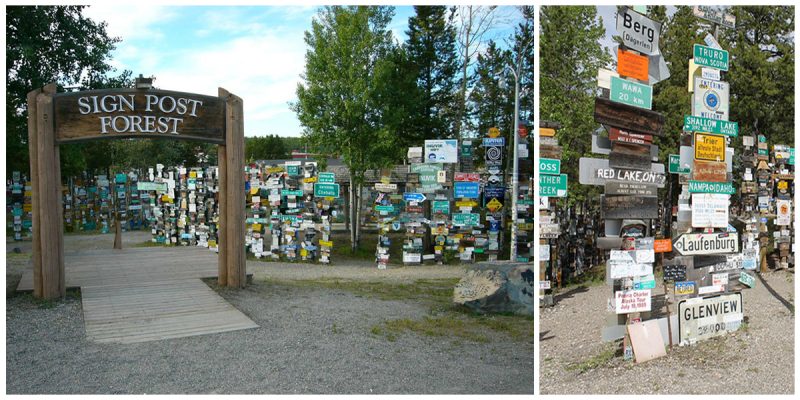Sign Post Forest is a collection of signs near the town of Watson Lake, in Yukon Territory, Canada and is one of the most famous of the landmarks along the Alaska Highway.
This “forest” full of signs of various shapes and sizes was started by U.S. soldier Carl K. Lindley in 1942, at a time when the Alaska Highway was being built. While working on the Alcan Highway near Lower Post, BC, Carl K. Lindley was injured and taken to the Army Aid Station in Watson Lake to recuperate.
During that time he was asked to paint and repair directional signposts. In those times, it was common practice for the US Army Engineers to put up directional posts at their camps.
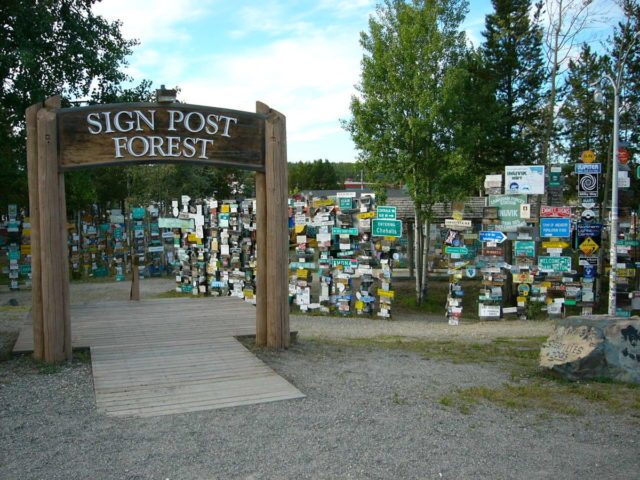
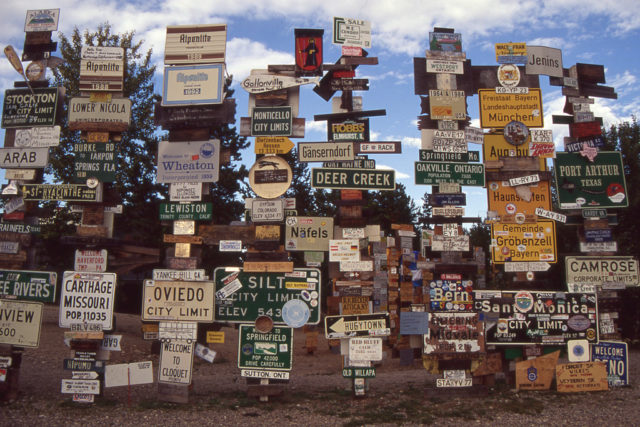
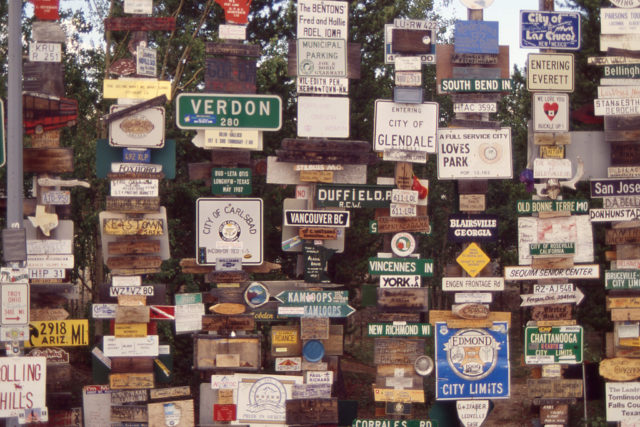
A commanding officer asked him to repair and erect the directional signposts, and while completing the job, he decided to personalize the and added a sign that indicated the direction and mileage to his hometown of Danville, Illinois.
Over the years, the single signpost grew to a forest a couple of acres in size with signs added by people from all over the world.
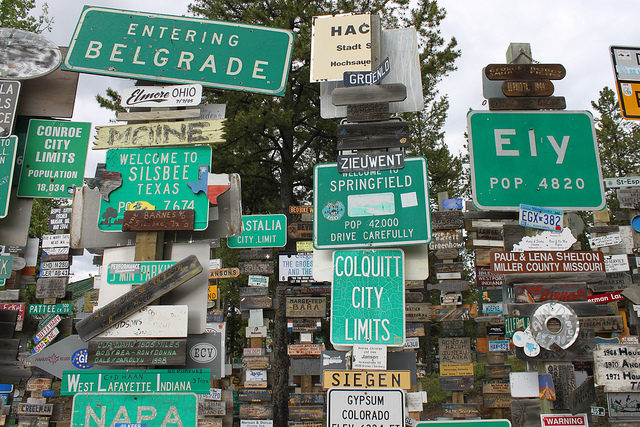
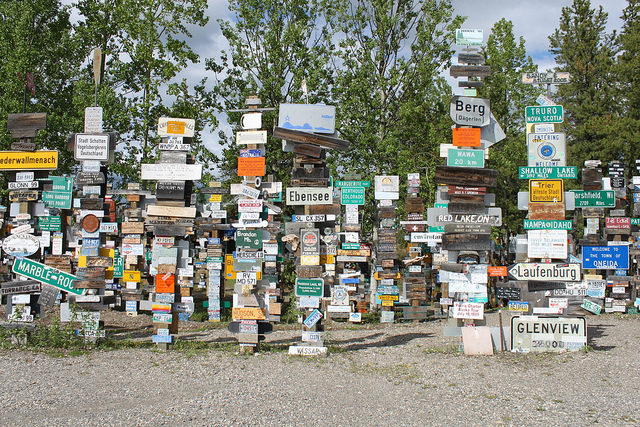
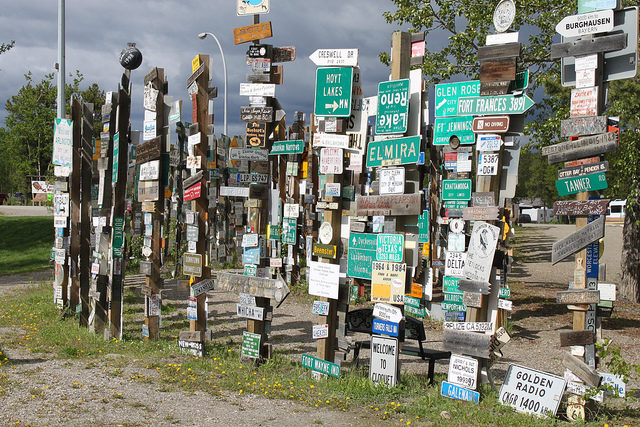
Carl was aware of the tradition that he started and what is now known as the World Famous Signpost Forest. In 1992, Carl K. Lindley and his wife Elinor visited the site, 50 years after his first post was erected.
Unfortunately, the original sign was lost, but a replica of the directional post was created, and Carl replaced his missing sign of Danville, Illinois. The replica Danville, Illinois sign is posted in the Visitor Center along with pictures of Carl taken in 1942 and 1992.
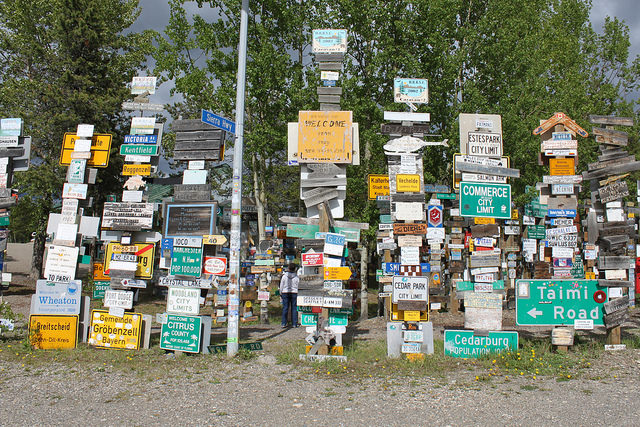
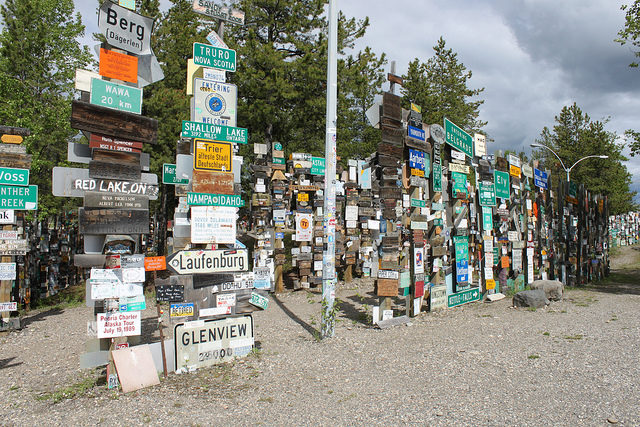
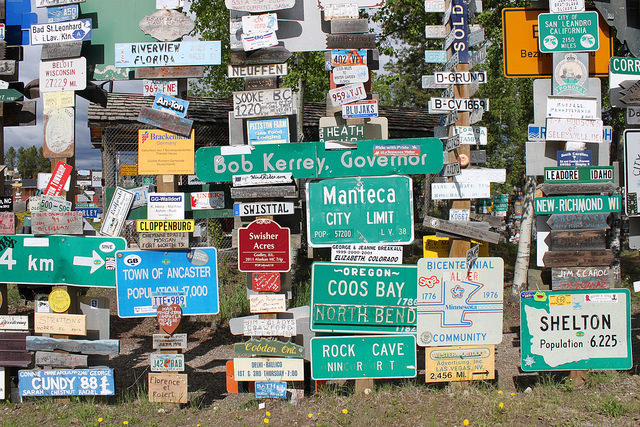
Today, there are over 100,000 signs in the Forest, and the number grows each year as travelers from around the world contribute signs and continue the tradition.
